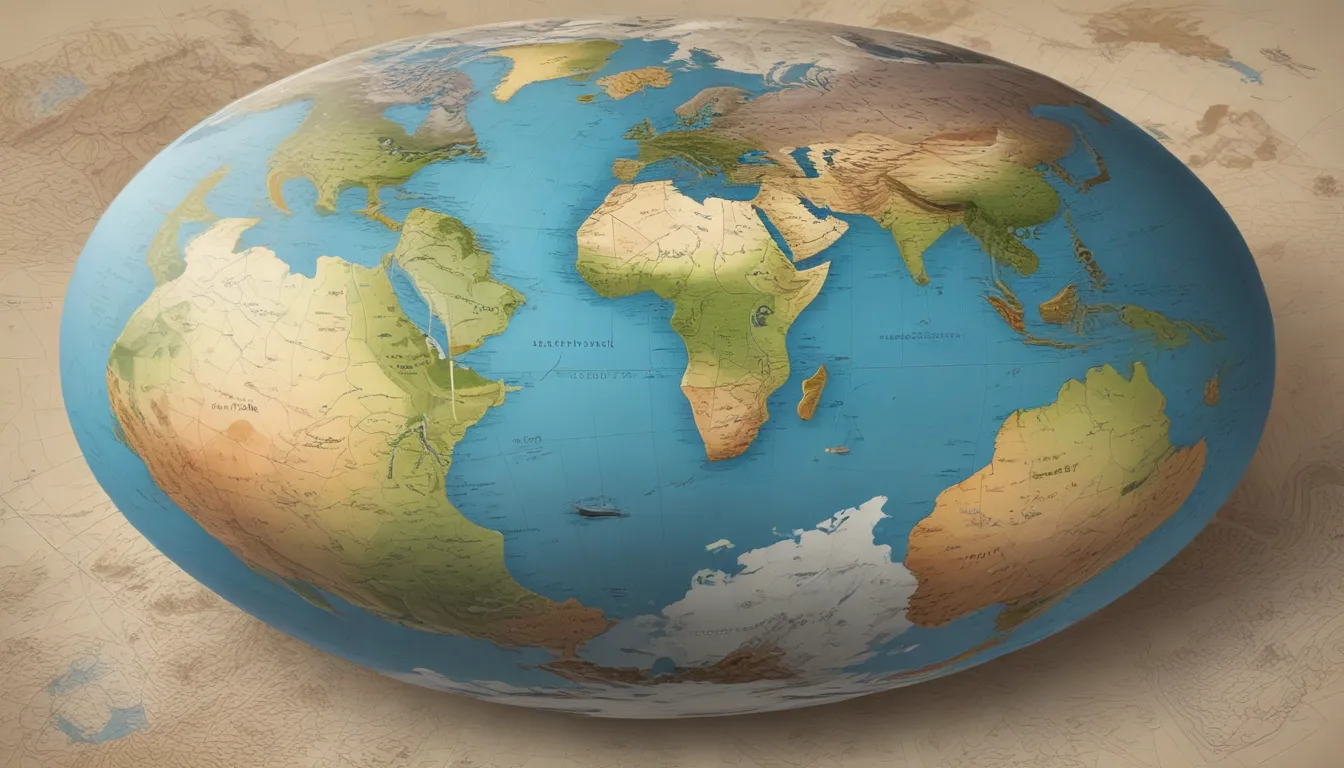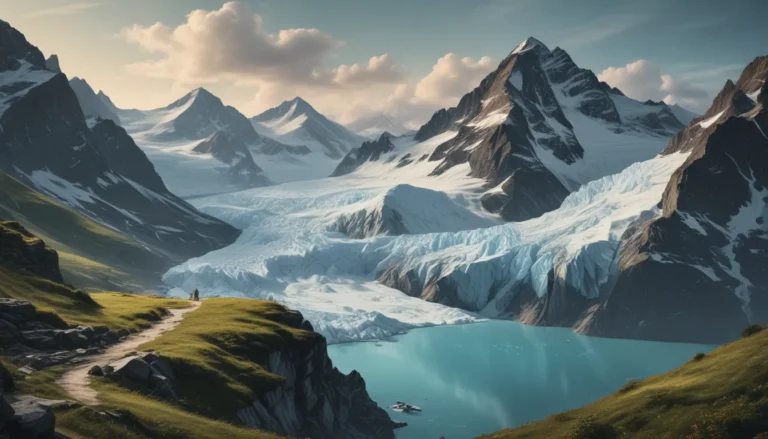A Note About Images: The images used in our articles are for illustration purposes only and may not exactly match the content. They are meant to engage readers, but the text should be relied upon for accurate information.
Are you ready to embark on a journey that will unravel the mysteries of latitude? Latitude, a foundational concept in geography, serves as a guidepost for understanding the intricate web of our planet’s geography and climate patterns. In this comprehensive article, we will unveil 18 captivating facts about latitude that will captivate your mind and deepen your appreciation for the complexity and diversity of Earth.
Key Takeaways:
- Latitude acts as a horizontal ruler for the Earth, influencing climate, daylight, and wildlife.
- The Arctic Circle, Tropic of Cancer, and Tropic of Capricorn, defined by latitude, have unique effects on sunlight and seasons.
- Latitude is not merely a line on a map; it is a force that shapes the world around us.
The Concept of Latitude: A Fundamental Geographical Marker
Latitude, an essential element in geography, measures the distance of a location from the equator in degrees. Ranging from 0° at the equator to 90° at the poles, latitude defines how far north or south a place is situated on the Earth’s surface. At the equator, where latitude is 0°, the dividing line between the Northern and Southern Hemispheres is drawn.
Exploring Latitude Zones:
The Arctic Circle: A Land of Eternal Sunlight
The Arctic Circle, situated at approximately 66.5° north latitude, marks a significant point where the sun remains visible for a continuous 24 hours during the summer solstice. This phenomenon brings a unique experience to regions in the Northern Hemisphere, showcasing the beauty of the polar landscape.
The Antarctic Circle: A World Shrouded in Darkness
Conversely, the Antarctic Circle, located at around 66.5° south latitude, experiences 6 months of continuous daylight followed by 6 months of perpetual darkness. This extreme condition, influenced by latitude, defines life in the Southern Hemisphere and shapes the region’s dramatic climate.
Tropic of Cancer and Tropic of Capricorn: Where the Sun Reigns
The Tropic of Cancer, positioned at approximately 23.5° north latitude, and the Tropic of Capricorn, situated at about 23.5° south latitude, mark the farthest points where the sun shines directly overhead. These circles of latitude herald the onset of summer in their respective hemispheres, showcasing the dance of sunlight across the globe.
The Impact of Latitude on Climate and Wildlife
Latitude plays a pivotal role in determining the climate and weather patterns of a location. Regions closer to the equator experience tropical climates and warmer temperatures, while areas near the poles have polar climates with chilly temperatures. This geographic marker influences the types of wildlife and ecosystems found in different latitudinal zones, giving rise to diverse habitats across the planet.
Navigating the World: Latitude and Longitude
While latitude measures a location’s north-south position, longitude defines its east-west position. The Prime Meridian and the International Date Line, vital markers of longitude, complement latitude in mapping the Earth’s surface. This coordinated system of latitude and longitude creates a grid for precise navigation and location plotting.
The Influence of Latitude on Culture and Agriculture
Latitude profoundly impacts cultural practices and agricultural traditions. The availability of sunlight, temperature variations, and natural resources influenced by latitude shape the customs and lifestyles of communities around the world. Moreover, the length of the growing season for plants is determined by latitude, affecting agricultural productivity and sustenance practices.
Latitude: A Tool for Measurement and Exploration
One degree of latitude consistently represents the same distance on Earth’s surface, providing a reliable measurement tool for distances and navigation. This standardized unit, coupled with longitude, forms the foundation of the rectangular grid system used in mapping and exploration, enabling accurate location plotting and seamless navigation across regions.
The Historical Roots of Latitude
The concept of latitude traces back to Greek astronomer Hipparchus, who introduced this fundamental geographic marker in the 2nd century BCE. His pioneering work paved the way for our modern understanding of latitude and its role in mapping the Earth’s surface.
Latitude’s Influence on Day Length and Climate
Latitude determines the angle at which sunlight reaches the Earth’s surface, affecting the length of day and night. Higher latitudes experience lower angles of sunlight, leading to shorter days and cooler temperatures. This interplay between latitude and sunlight shapes the climate and seasons in different regions of the world.
Conclusion: Embracing the Wonders of Latitude
In conclusion, delving into the realm of latitude unveils the astonishing complexities and marvels of our planet’s geographic tapestry. Latitude not only influences climate patterns and wildlife habitats but also shapes cultural practices and agricultural traditions worldwide. By understanding latitude, we gain profound insights into Earth’s tilt, the changing lengths of day and night, and the distribution of ecosystems across latitudinal zones.
Next time you gaze at a world map or set out on an adventure, take a moment to appreciate the profound impact of latitude on our world. From the equator’s consistent day length to the Arctic and Antarctic circles’ unique phenomena, latitude guides our exploration of Earth’s diverse landscapes and ecosystems. Journey into the vibrant sphere of latitude, where geography meets wonder, and let the magic of our planet’s latitude zones ignite your curiosity and appreciation for the beauty of Earth.
FAQs: Exploring Latitude in Depth
-
What is latitude, and how does it influence climate?
Latitude measures the distance of a location from the Equator and plays a crucial role in determining climate by affecting factors like sunlight angle, temperature, and daylight hours. -
How does latitude impact cultural practices and agricultural traditions?
Latitude influences cultural practices by shaping sunlight availability, temperature variations, and natural resources, which in turn affect traditional practices, customs, and agricultural productivity. -
Are latitudes fixed, or can they shift over time?
Latitudes are generally fixed based on Earth’s axial tilt; however, geological processes and continental drift can cause slight shifts in latitudinal positions over long geological timescales. -
How is latitude used in navigation and mapping?
Latitude, along with longitude, forms the basis of the rectangular grid system used in navigation and mapping, enabling accurate location plotting and precise navigation across the Earth’s surface. -
What are the geographic markers associated with latitude?
Key geographic markers linked to latitude include the Arctic Circle, Antarctic Circle, Tropic of Cancer, Tropic of Capricorn, and the equator, each playing a unique role in defining seasonal changes and sunlight distribution across latitudinal zones.
Exploring Latitude Zones: Unveiling the Beauty of Earth’s Diversity
Experience the captivating allure of Earth’s latitude zones and dive into the enchanting world of our planet’s geographic wonders. Join us as we unravel the mysteries of latitude and discover how this simple numerical measurement holds the key to understanding the complexity and diversity of our world. Let latitude be your guide as you journey through the vibrant landscapes and unique ecosystems shaped by its influence. Embrace the magic of latitude and embark on a voyage of discovery that will broaden your horizons and deepen your appreciation for the boundless beauty of Earth.






